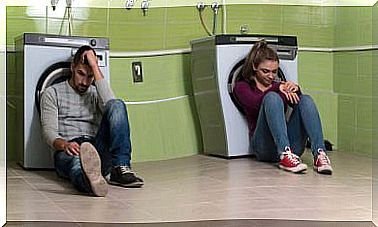New Technologies, Can They Be Therapeutic Tools?

New technologies have changed our way of life, habits and customs. Now we are not able to leave the house without our smartphone and we constantly check our e-mail and social networks. New technologies are here to stay, among other things because we are already building parts of our lives around these tools.
There are many nostalgic people who deny this new form of communication and what it implies. However, there is something that is undeniable: our quality of life, with them, can be – not necessarily is – much better. In the field of psychology, new technologies are increasingly used as a therapeutic tool because the advantages derived from their use are several and important.
Sometimes they are used because they reduce costs, because they allow therapy to be reconciled with the lives of very busy patients or those who travel constantly, or because with them we can simulate different exposure situations with great control of their characteristics. In this sense, technological tools within psychology are beginning to be applied to therapy with different disorders, such as phobias, Alzheimer’s, anxiety disorders or obsessive compulsive disorders.

New technologies applied to the treatment of phobias
From the perspective of the cognitive-behavioral psychological stream, one of the strategies to “treat” phobias is exposure to the phobic element. But in the case of some phobias, real exposure may be difficult or too dangerous, so new technologies are used. In the phobia of flying, for example, flight simulators are used very similar to those used by pilots for their practices.
Virtual reality can be a useful way of making successive approximations to the feared object or situation. It can be applied in phobias of animals, heights or public speaking. This type of strategy is being used more and more thanks to the fact that technology allows us to dive into the virtual world more and more realistic.
Another advantage of its use is the possibility of continuing therapy at home, although it is clear that technology cannot replace a therapist, it can send “tasks” that can be done from home. It is a resource that can be economical in terms of time and sometimes money, such as simulating a flight. It is not the only tool used to deal with phobias, but it can be a good complement.
Cognitive computer stimulation
Cognitive stimulation is a type of intervention that aims to exercise cognitive functions. It can be used to reinforce or improve those functions that may be affected by some pathology. It is usually used in dementias, with memory, language or cognitive functions being the functions that are most worked on.
A large number of cognitive stimulation programs have been developed with the use of tablets and computers. In the beginning, dementias were the main objective, but today it is used in other pathologies such as attention and hyperactivity disorder, stroke or head trauma. These types of programs are very versatile and allow customization of tasks at a low cost.
In populations, such as that formed by our elders, using new technologies is a form of stimulation in itself, since they need to become familiar with its use. There are several scientific studies that support the use of cognitive stimulation with new technologies and they are used in many day centers with positive results.

Future perspectives
As in everything that surrounds us, technology promises to be increasingly present in the field of psychological therapies. For example, today there are already psychologists who offer therapy sessions via Skype or there are already specific applications designed for us to keep track of our mood. In the market you can find a multitude of applications that promise to contribute to your mental health; In this sense, the important thing in the face of the growing supply is knowing how to identify which ones can be useful for us.
Not all applications fulfill the initial promise of improving our mental life. It is important that when using these types of tools we look for studies that support what they want to sell us. In any case, an application can never replace a professional : they can be useful as tools or resources, facilitators or enhancers of the effects of a therapy, but they will never be a psychologist.
Finally, highlight the role of technology in the administration of psychometric tests. In this sense, they can greatly speed up the evaluation phase: the advantage of these computerized tests is that they give the results immediately. In this way, the psychologist no longer has to correct the test, only interpret the results and integrate them with those of other tests or evaluation instruments. Thus, the professional can dedicate this time to make a more precise evaluation.









